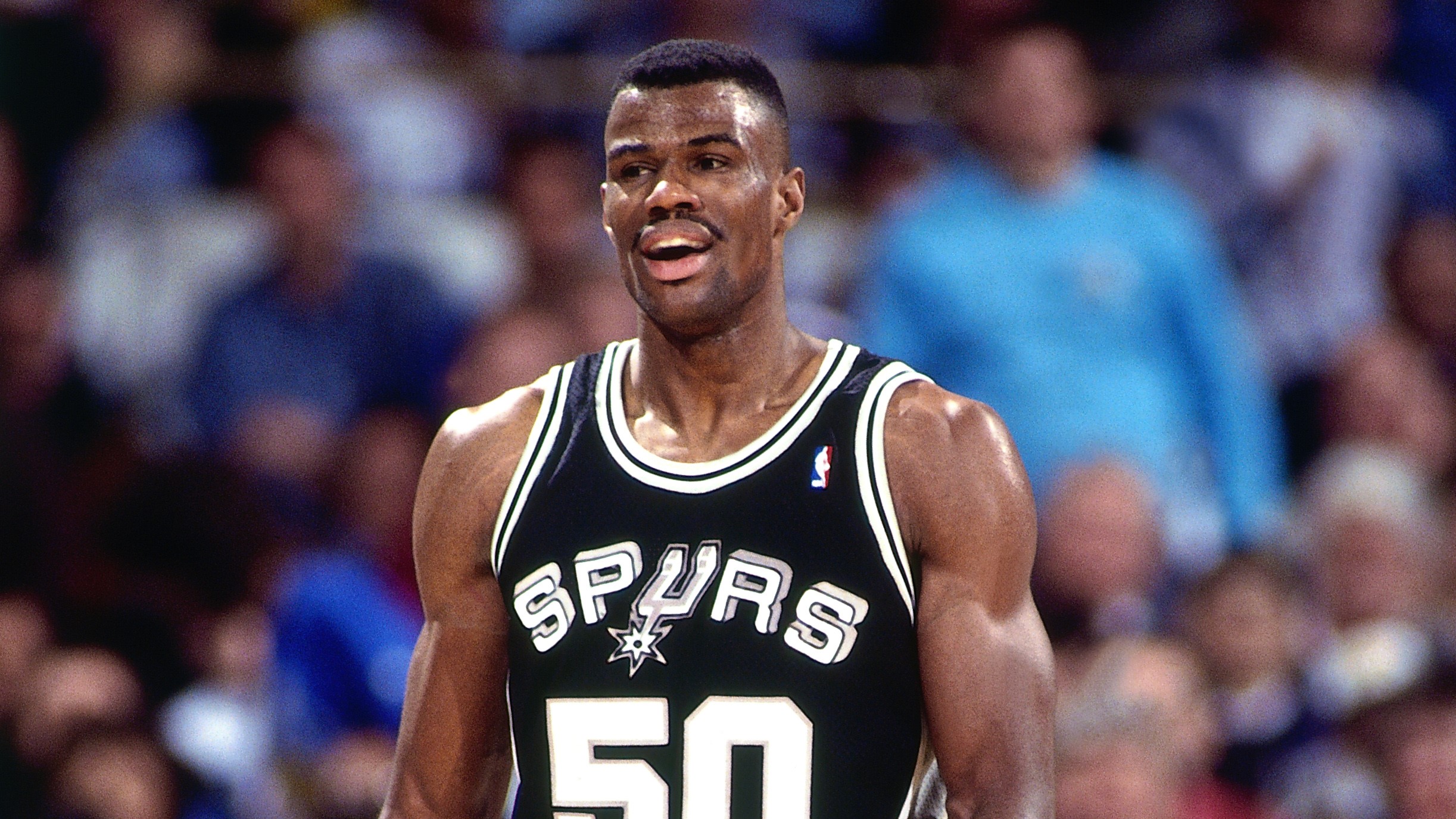
David Robinson of the San Antonio Spurs in the game against the Golden State Warriors at the Oakland Coliseum in Oakland, California, 1994. /VCG
David Robinson of the San Antonio Spurs in the game against the Golden State Warriors at the Oakland Coliseum in Oakland, California, 1994. /VCG
When David Robinson was selected by the San Antonio Spurs with the first overall pick in the 1987 NBA Draft, both he and the team believed he was there to save everything for the team.
Though Robinson came two years late than the team had expected – he went to serve in the navy for his country proudly – he almost gave the Spurs what they wanted.
In the 1988-89 season, the Spurs' game attendance was some 8,400 on average. One year into Robinson's rookie season, the number jumped to over 14,000. Three seasons after Robinson entered the league, the market value of the Spurs rose from 40 million to over 100 million U.S. dollars.
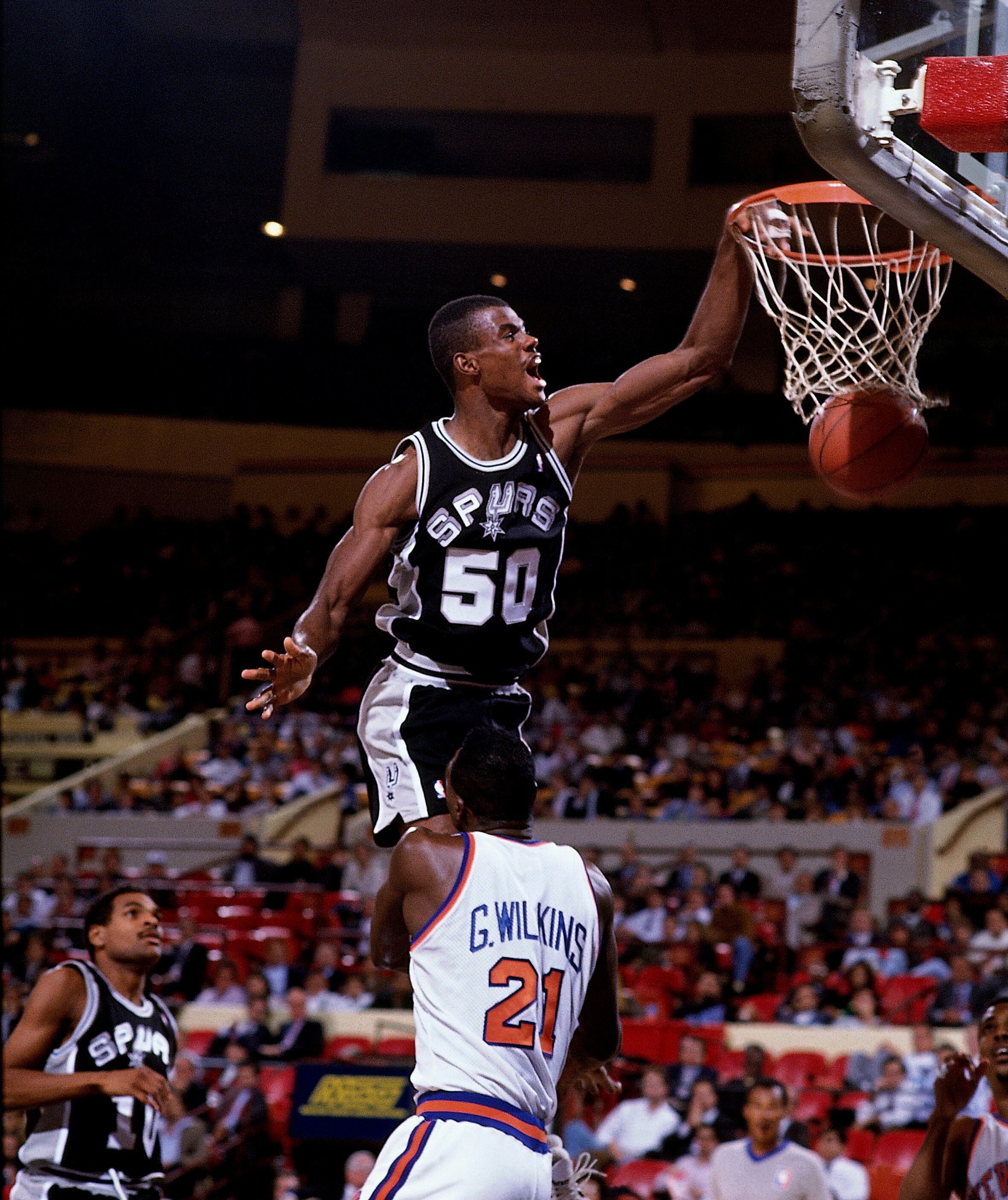
David Robinson #50 of the San Antonio Spurs dunks in the game against the New York Knicks at the Madison Square Garden in New York City, 1989. /VCG
David Robinson #50 of the San Antonio Spurs dunks in the game against the New York Knicks at the Madison Square Garden in New York City, 1989. /VCG
On the court, Robin put down 24.3 points, 12.0 rebounds and 3.9 blocks per game in his first season. He was named the All-NBA Third Team and the All-Defensive Second Team. Thanks to his incredible performance, the Spurs achieved 35 more wins.
Robinson continued to reap more honors in the following years. He became the NBA rebounding leader in 1991, the blocking leader and Defensive Player of the Year (DPOY) in 1992, the scoring champion in 1994 and finally, the NBA MVP in 1995.
Robinson delivered dominant performance during regular season. Though he was a 2.16-meter-tall, 107-kilogram giant, he could run and jump like a guard. Robinson was only 1.7 meters tall in high-school – he grew to 1.98 meters when he graduated – with a vertical jump of 90 centimeters. When graduating from the United States Naval Academy, he filled every inch of his 2.16-meter-tall body with muscles but managed to keep his athleticism.
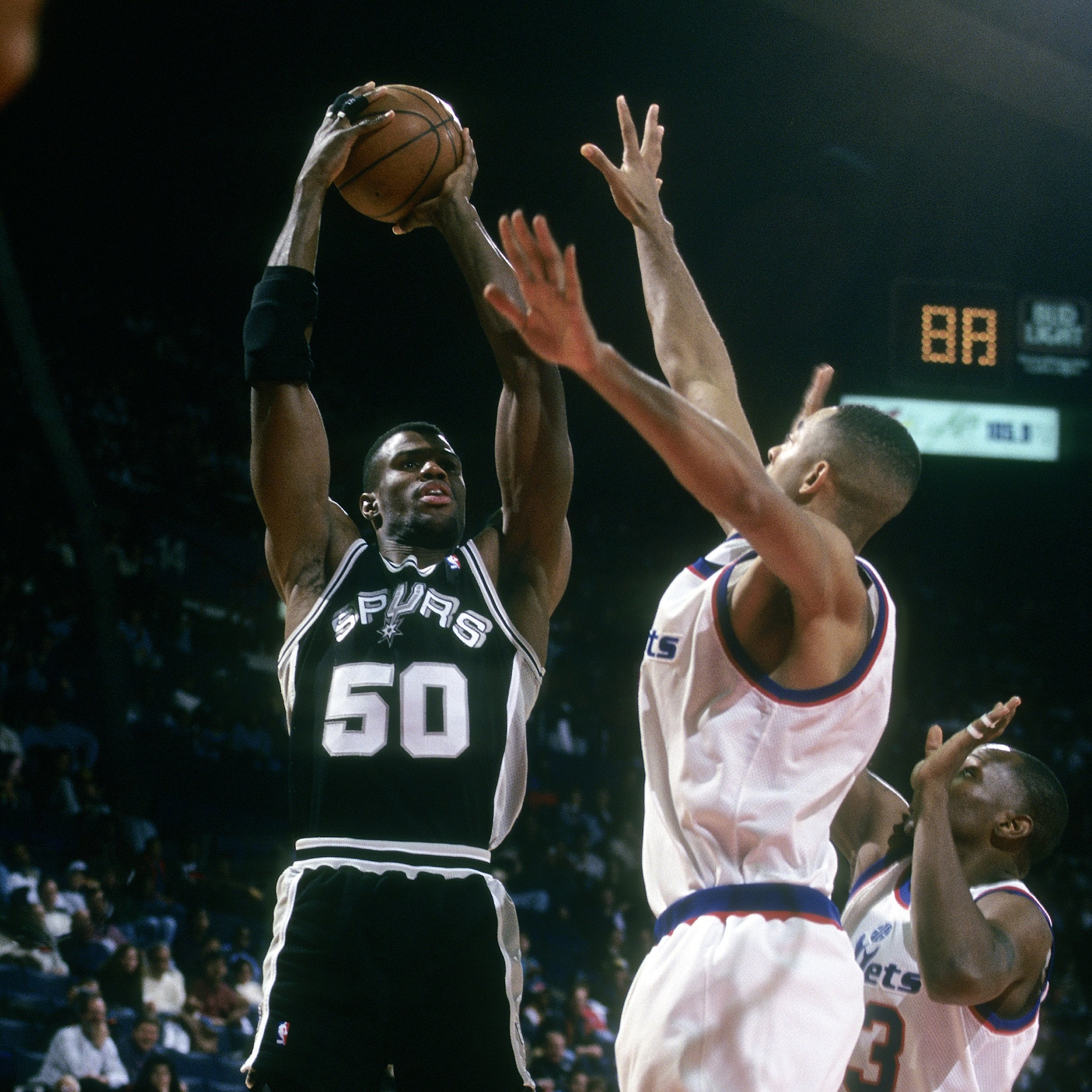
David Robinson #50 of the San Antonio Spurs shoots the ball in the game against the Washington Bullets at the US Airways Arena in Baltimore, Maryland, 1990. /VCG
David Robinson #50 of the San Antonio Spurs shoots the ball in the game against the Washington Bullets at the US Airways Arena in Baltimore, Maryland, 1990. /VCG
Meanwhile, Robinson developed reliable jump shooting from middle range which made him almost unstoppable. In the game against the Detroit Pistons on February 17, 1994, he dropped 34 points, 10 rebounds, 10 assists and 10 blocks – the fourth and last quadruple-double in NBA history. Then in the last regular season game on April 24, 1994, Robinson went 26-41 to score 71 points against the Los Angeles Clippers, the fourth-highest point record in history.
In the 1994-95 season, Robinson averaged 27.6 points, 10.8 rebounds, 2.9 assists and 3.2 blocks per game while the Spurs finished the regular season with a 62-20 record. Robins had already won all the individual honors and was driving towards the final championship. In the Western Conference Finals, he and the Spurs met the defending NBA MVP, Hakeem Olajuwon and the defending champions, the Houston Rockets.
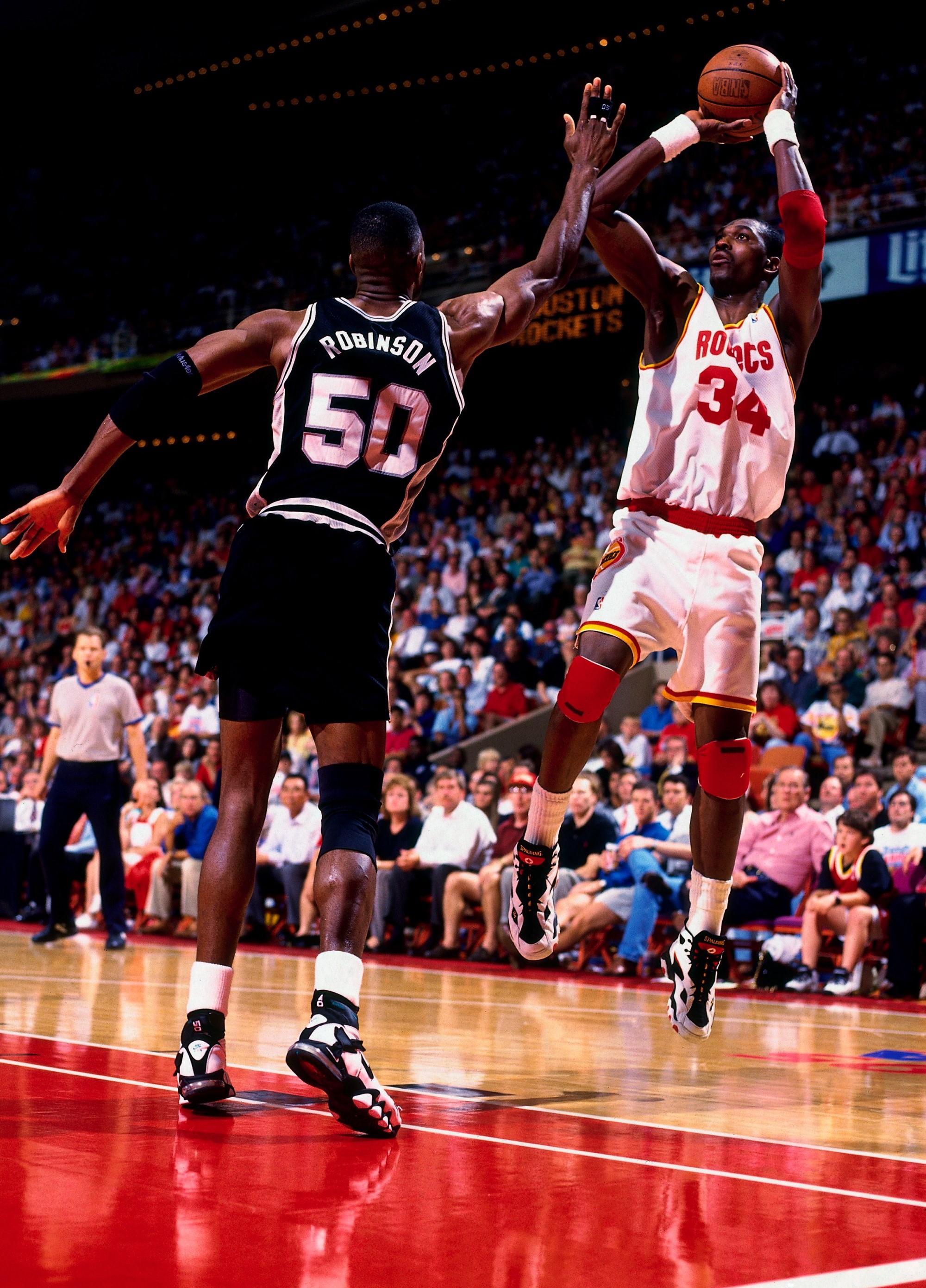
Hakeem Olajuwon #34 of the Houston Rockets shoots the ball in front of David Robins of the San Antonio Spurs in Game 3 of the Western Conference Finals at The Summit in Houston, Texas, May 26, 1995. /VCG
Hakeem Olajuwon #34 of the Houston Rockets shoots the ball in front of David Robins of the San Antonio Spurs in Game 3 of the Western Conference Finals at The Summit in Houston, Texas, May 26, 1995. /VCG
What happened later was the most brutal revenge one could ever imagine. The Spurs lost the series 4-2. Though Robinson got 23.8 points, 11.3 rebounds, 2.3 assists and 2.2 blocks per game, Olajuwon totally outmatched him with 35.3 points, 12.5 rebounds, 5.0 assists and 4.2 blocks. The whole world reached consensus: Olajuwon truly broke Robinson.
If Robinson's career continued like this, the Spurs would still love him but not as much as they do today. The game changer happened in the summer of 1997 and his name was Tim Duncan.
Unlike the other three of the top 4 centers in the 1990s, Robins was never able to lead his team to the Finals by himself. Being a gentleman also became his biggest weakness. He was not tough enough in offense, his playstyle was not solid enough in the playoffs. Fortunately, Robinson was a perfect teammate who only wanted the best for the team.
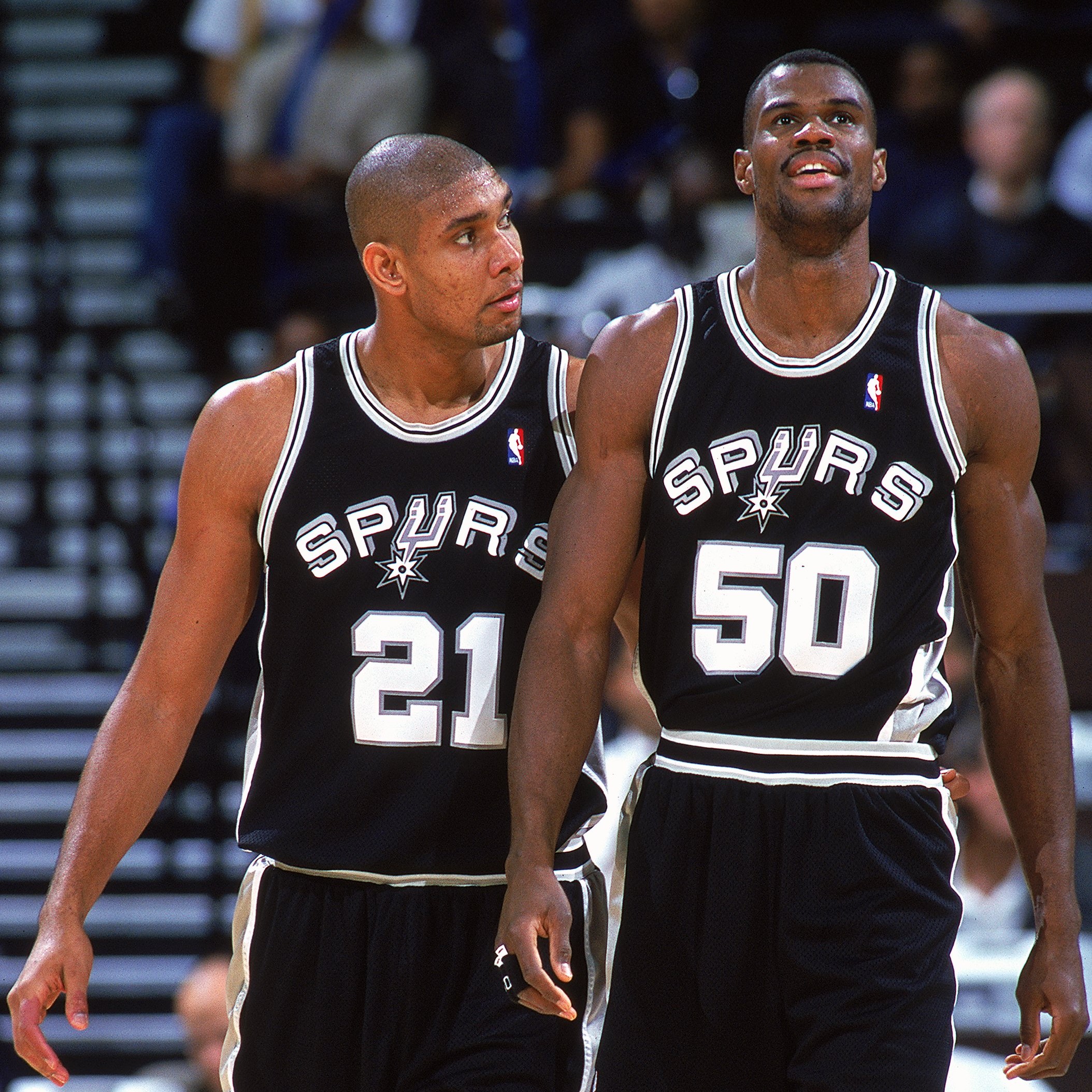
Tim Duncan #21 of the San Antonio Spurs talks to his teammate David Robinson in the game against the Golden State Warriors at the Oakland Coliseum, November 9, 1999. /VCG
Tim Duncan #21 of the San Antonio Spurs talks to his teammate David Robinson in the game against the Golden State Warriors at the Oakland Coliseum, November 9, 1999. /VCG
In the 1998-99 season, San Antonio's head coach Greg Popovich went to Robinson and tactfully suggested that it might be better for the team to rely on Duncan as their first offensive option. Robinson, who could still score 21.6 points, 10.6 rebounds, 2.7 assists and 2.6 blocks per game in the previous season, agreed immediately.
Later, Robinson recalled that he already got used to getting 25 points, 10 rebounds every night and anybody was able to score 15+10. Then he became the one who had to think twice before taking every shot to get 15+10 in the game. He had to abandon more freedom in offense and invest more in defense.
It's not easy, especially for a guy who shot 41 times to score 71 points in one game. However, Robinson did it and that's how the Spurs won their first two championships.
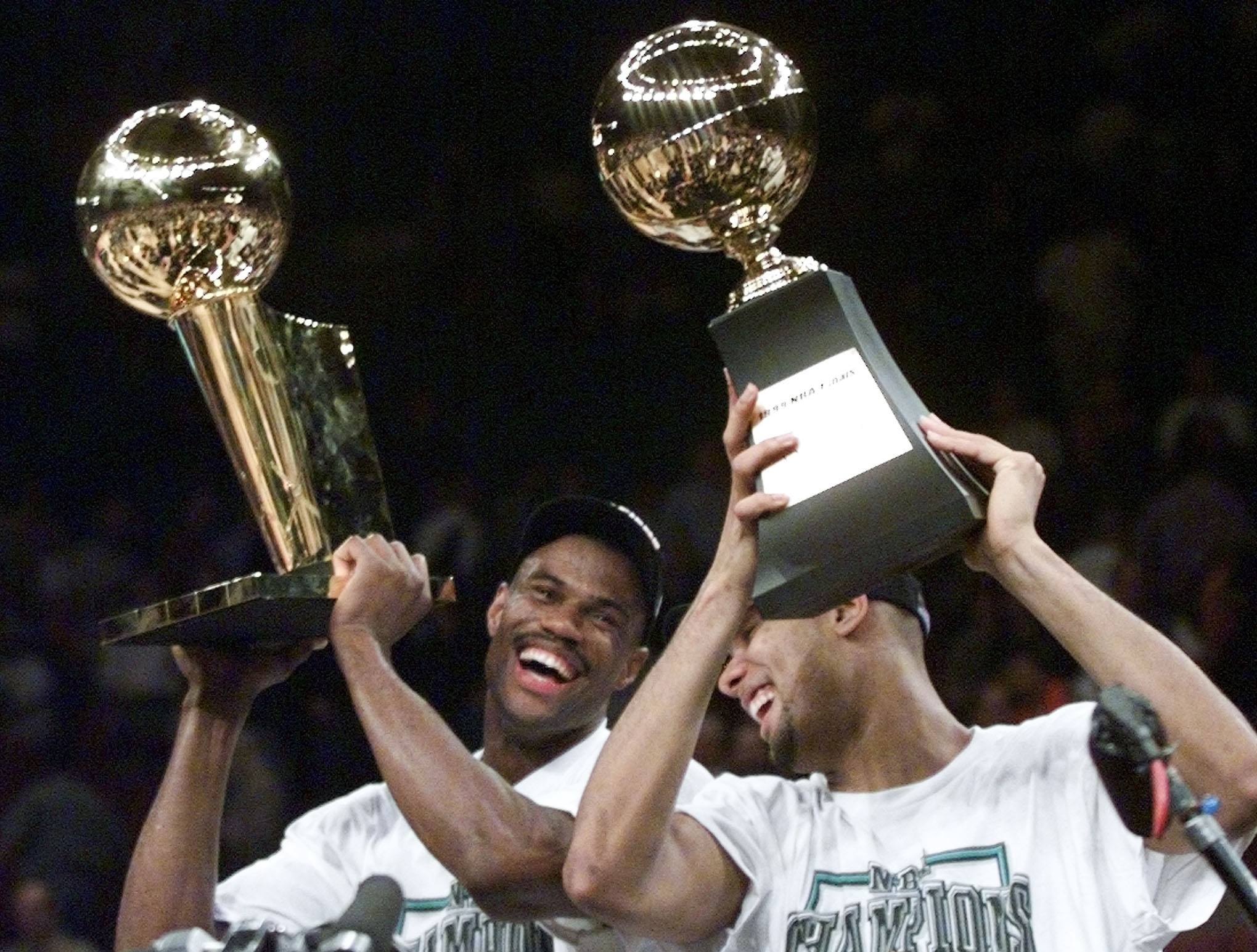
David Robinson (L) holds the Larry O'Brien NBA Championship Trophy after Game 5 of the NBA Finals at the Madison Square Garden, June 25, 1999. /VCG
David Robinson (L) holds the Larry O'Brien NBA Championship Trophy after Game 5 of the NBA Finals at the Madison Square Garden, June 25, 1999. /VCG
In offense, Duncan did not have more tricks than Robinson – his jump and free throw shooting were worse – but he was able to post up deep in the paint and scored there, changing the opponent's defense. In defense, Duncan was younger and faster than Robinson so he could patrol around the 3-point line.
Meanwhile, Robinson began to set more screens for his teammates on the perimeter. Instead of driving towards the rim of shooting in the middle range, he began to pass more as a pillar in the free throw line. In defense, Robinson could stay under the rim to protect the rebound the basket. When the Spurs met the Los Angeles Lakers, he would also take over Shaquille O'Neal – with the help of Duncan from time to time.
Robinson did not win championships for the Spurs alone, but his broad-mindedness and will to sacrifice enabled Duncan to do the job. Compared with O'Neal, Olajuwon and Ewing, Robinson was always the better teammate.